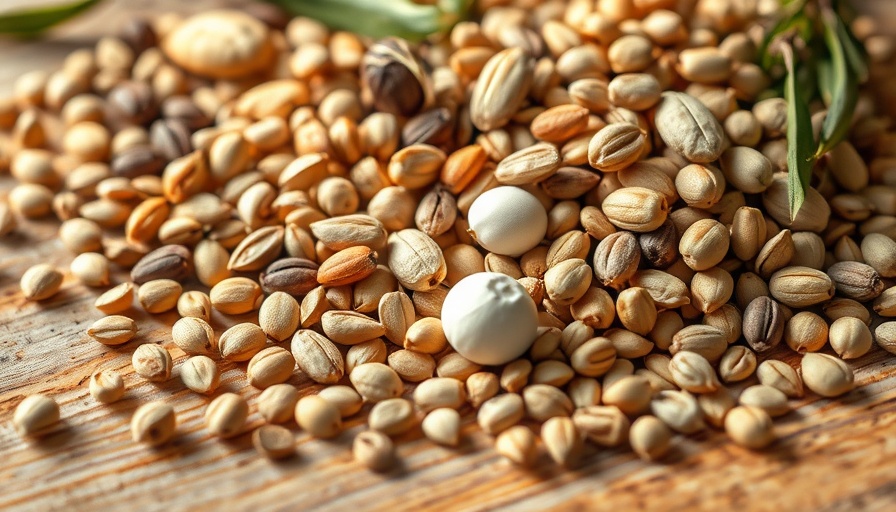
Understanding the Importance of Fiber in Your Diet
Are you weary of dealing with constipation? This common issue affects countless individuals daily and can disrupt your routine. Fortunately, there is a natural way to ease yourself back into digestive comfort: fiber. Integrating high-fiber foods in your meals can be transformative, facilitating better digestion and regular bowel movements. While occasional constipation can be normal, chronic discomfort often signals a need for dietary modifications. Alongside hydration and regular physical activity, embracing fiber-rich foods is key for ensuring stellar gut health and overall wellness.
The Unsung Benefits of Dietary Fiber
Fiber isn't just a buzzword; it plays a crucial role in digestive health. It's not only vital for alleviating constipation but also essential for improving blood sugar regulation and enhancing heart health. Additionally, consuming adequate fiber can help maintain a healthy weight by promoting feelings of fullness. As you embark on finding natural solutions to digestive issues, it’s beneficial to explore the multitude of health benefits high-fiber foods can offer.
Eleven High-Fiber Foods to Incorporate Into Your Diet
Here’s a look at 11 high-fiber foods recommended by nutritionists that can work wonders for your digestion:
- Whole Grains: Foods such as whole grain bread, quinoa, and barley not only provide essential vitamins and minerals but also help facilitate smoother digestion by adding bulk to your stool.
- Oats: Known for their high soluble fiber content, oats are excellent for improving bowel regularity and support heart health. Their beta-gluten fiber helps maintain steady blood sugar levels and supports healthy cholesterol levels.
- Brown Rice: A staple grain, brown rice is rich in fiber. It helps to keep your digestive system moving and energized.
- Green Vegetables: Leafy greens like spinach, kale, and bok choy are fantastic dietary additions that contribute both soluble and insoluble fiber. They help detoxify your system while enhancing digestion.
- Salads: Incorporating fresh salads made of abundant raw vegetables and fruits can be a refreshing way to consume your daily fiber while enjoying various flavors and textures.
- Ragi (Finger Millet): Rich in dietary fiber, Ragi is a nutritious alternative to wheat flour. It can be made into various dishes, effective in maintaining gut health.
- Sprouts: Germinated beans like moong and gram are not only high in fiber but also provide essential nutrients that promote immune health and detoxification.
- Legumes: Pulses like lentils, chickpeas, and beans are among the best plant-based sources of fiber, making them excellent meal additions.
- Nuts and Seeds: A hand full of nuts such as almonds or seeds like chia and flaxseeds can provide healthy fats along with a fiber boost.
- Apples: This fruit is not only delicious but also contains pectin, a type of soluble fiber that can help soften stool.
- Bananas: Rich in pectin and potassium, bananas help restore normal bowel function and prevent constipation.
Simple Strategies for Boosting Your Fiber Intake
Making dietary changes may feel overwhelming at first, but incorporating high-fiber foods into your routine can be straightforward. Start small: switch your morning cereal to oatmeal, choose whole grain bread, or include a side salad with your meals. Smoothies can serve as an excellent vehicle to include fiber-rich fruits and veggies, allowing you to experiment with flavors while significantly improving your digestion.
Listen to Your Body: Recognizing Your Fiber Needs
Everyone's digestive system is unique, and needs can vary. Pay attention to how your body responds as you increase fiber and ensure you drink plenty of water to aid the transition. While dietary changes may result in initial digestive discomfort for some, they often lead to significant long-term benefits.
Embrace a Healthier Lifestyle
As you adopt these fiber-rich foods into your diet, you’ll not only help alleviate constipation but also foster a deeper connection with your body and its nutritional needs. The journey toward a healthier, happier you starts with small, manageable changes. Dive into the world of high-fiber foods, and watch as your digestive health flourishes!
 Add Row
Add Row  Add
Add 




 Add Row
Add Row  Add
Add 

Write A Comment